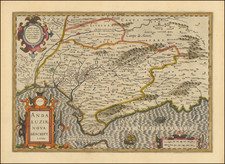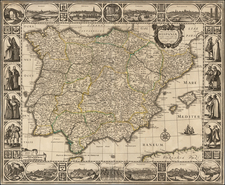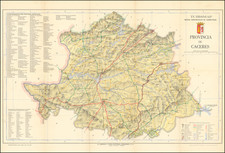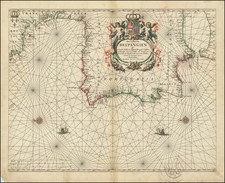Rare separately published map of Minorca, showing the results of the French Military Survey of the Island in 1758 and 1759.
The map includes a large inset of Port Mahon and the Fort S. Philippe area, with a key identifying important military points of interest.
A map of Minorca from the French military survey conducted during the Seven Years' War (1758-1759 according to a description on the map). Minorca was captured by the French in 1756 and regained by the British as the part of a territorial settlement ending the war in 1762. In 1782 Franco-Spanish forces recaptured it on the 4th of February 1782, after a 171-day siege, as a part of the European theater of the American War of Independence.
The map was published in the context of the 1782 siege. It constitutes a series of four plates which were advertised in the Gazette de France on 15 March 1782? (there is a discrepancy between a title on the map and this in the advertisement, the latter reading: "Le Plan topographique & militaire de l'îsile Minorque").
The map is exceedingly rare. OCLC locates only the example in the British Library.
Pierre Antoine Tardieu (1784-1869), also known to sign his works as PF Tardieu, was a prolific French map engraver and geographer. The Tardieu family, based in Paris, was well known for their talent in engraving, cartography, and illustration. Pierre Antoine’s father, Antoine Francois Tardieu, was an established cartographer who published numerous atlases. His son is said to have collaborated with him for many years before establishing his own independent career.
Pierre Antoine Tardieu’s most famous work includes engravings of the islands of La Palma and Tenerife, for which in 1818 he was awarded a bronze medal by King Louis-Phillipe for the beauty and accuracy of his mapping. Other famous work includes his mapping of Louisiana and Mexico, engravings of Irish counties, maps of Russia and Asia, and his highly celebrated illustrations of all the provinces of France. He was also the first mapmaker to engrave on steel.
Tardieu was a popular map engraver in his lifetime, enjoying the patronage of the likes of Alexander von Humboldt and respect among his peers. In 1837, he was appointed the title Chevalier de la Légion d’honneur. As was written in his obituary in the Bulletin of the Geographical Society of France, he was renowned for his combination of technical talent and scholarly research skills and praised for furthering his family’s well-respected name in the scientific arts.














